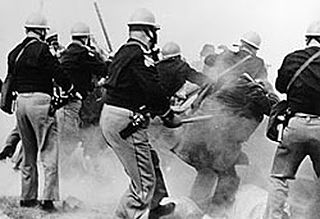 W
WThe Selma to Montgomery marches were three protest marches, held in 1965, along the 54-mile (87 km) highway from Selma, Alabama, to the state capital of Montgomery. The marches were organized by nonviolent activists to demonstrate the desire of African-American citizens to exercise their constitutional right to vote, in defiance of segregationist repression; they were part of a broader voting rights movement underway in Selma and throughout the American South. By highlighting racial injustice, they contributed to passage that year of the Voting Rights Act, a landmark federal achievement of the civil rights movement.
 W
WRalph David Abernathy Sr. was an American civil rights activist and Baptist minister. He was ordained in the Baptist tradition in 1948. As a leader of the civil rights movement, he was a close friend and mentor of Martin Luther King Jr. He collaborated with King and E. D. Nixon to create the Montgomery Improvement Association, which led to the Montgomery bus boycott, and co-founded and was an executive board member of the Southern Christian Leadership Conference (SCLC). He became president of the SCLC following the assassination of King in 1968, where he led the Poor People's Campaign in Washington, D.C., among other marches and demonstrations for disenfranchised Americans. He also served as an advisory committee member of the Congress on Racial Equality (CORE).
 W
WOn March 7, 2015, President of the United States Barack Obama delivered a speech at Edmund Pettus Bridge to mark the 50th anniversary of the Selma to Montgomery marches on the subject of race relations within the United States. Among the estimated 40,000 present were former President George W. Bush, former First Lady Laura Bush, and Amelia Boynton Robinson, John Lewis, Diane Nash, Bernard Lafayette, and many other 'foot soldiers' who had taken part in the march in 1965.
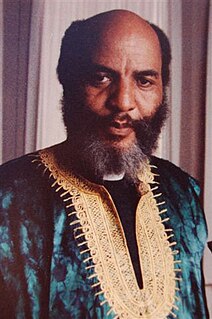 W
WJames Luther Bevel was a minister and a leader of the Civil Rights Movement in the United States. As the Director of Direct Action and of Nonviolent Education of the Southern Christian Leadership Conference (SCLC), he initiated, strategized, directed, and developed SCLC's three major successes of the era: the 1963 Birmingham Children's Crusade, the 1965 Selma voting rights movement, and the 1966 Chicago open housing movement. He suggested that SCLC call for and join a March on Washington in 1963. Bevel strategized the 1965 Selma to Montgomery marches, which contributed to Congressional passage of the 1965 Voting Rights Act.
 W
WBrown Chapel A.M.E. Church is a church at 410 Martin Luther King Jr. Boulevard in Selma, Alabama, United States. This church was a starting point for the Selma to Montgomery marches in 1965 and, as the meeting place and offices of the Southern Christian Leadership Conference (SCLC) during the Selma Movement, played a major role in the events that led to the adoption of the Voting Rights Act of 1965. The nation's reaction to Selma's "Bloody Sunday" march is widely credited with making the passage of the Voting Rights Act politically viable in the United States Congress.
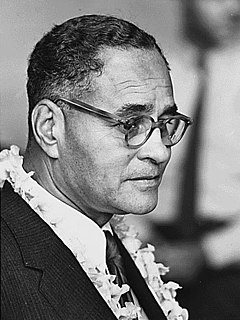 W
WRalph Johnson Bunche was an American political scientist, diplomat, and leading actor in the mid-20th-century decolonization process and US civil rights movement, who received the 1950 Nobel Peace Prize for his late 1940s mediation in Israel. Among black Nobel laureates he is the first African American and first person of African descent to be awarded a Nobel Prize. He was involved in the formation and administration of the United Nations and played a major role in both the decolonization process and numerous peacekeeping operations sponsored by the UN. In 1963, he was awarded the Presidential Medal of Freedom by President John F. Kennedy. At the UN, Bunche gained such fame that Ebony magazine proclaimed him perhaps the most influential African American of the first half of the 20th century and "[f]or nearly a decade, he was the most celebrated African American of his time both [in the US] and abroad."
 W
WTheresa Burroughs was an active participant in the civil rights movement during the 1960s. She worked to secure the right to vote for blacks in Alabama and the rest of the Southern United States. In 1965 she was attacked and arrested by state troopers and sheriff's deputies along with other civil rights demonstrators attempting to cross the Edmund Pettus Bridge in Selma, Alabama. She was the founder of the Safe House Black History Museum in Greensboro, Alabama, the location where the Reverend Dr. Martin Luther King Jr. was hidden from the Ku Klux Klan during his visit to Alabama in 1968. Burroughs was a childhood friend of King's wife, Coretta Scott King.
 W
WJames Gardner Clark, Jr. was the sheriff of Dallas County, Alabama, United States from 1955 to 1966. He was one of the officials responsible for the violent arrests of civil rights protestors during the Selma to Montgomery marches of 1965, and is remembered as a racist whose brutal tactics included using cattle prods against unarmed civil rights supporters.
 W
WMaurice Davis was a rabbi, and activist. He served on the President's Commission on Equal Opportunity, in the Lyndon B. Johnson Administration and was a director of the American Family Foundation, now known as the International Cultic Studies Association. Davis was the rabbi of the Jewish Community Center of White Plains, New York and a regular contributor to The Jewish Post and Opinion.
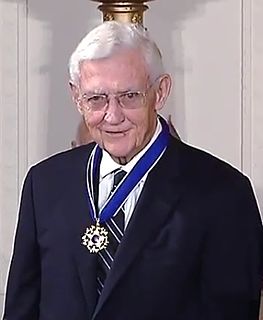 W
WJohn Michael Doar was an American lawyer and senior counsel with the law firm Doar Rieck Kaley & Mack in New York City. During the administrations of presidents John F. Kennedy and Lyndon B. Johnson, he served first as Deputy Assistant Attorney General for Civil Rights from 1961 to 1965, and then as head of the division from 1965 until 1967. He led the government's response to events such as the admission and protection of James Meredith, the first black student admitted to the University of Mississippi, as well as the evolving response to the civil rights movement promoting integration and voter registration in the South. Additionally, in 1973–74, he served as the lead special counsel for the U.S. House Judiciary Committee's impeachment inquiry staff during the impeachment process against Richard Nixon.
 W
WThe Edmund Pettus Bridge carries U.S. Route 80 Business across the Alabama River in Selma, Alabama. Built in 1940, it is named after Edmund Winston Pettus, a former Confederate brigadier general, U.S. senator, and state-level leader of the Alabama Ku Klux Klan. The bridge is a steel through arch bridge with a central span of 250 feet (76 m). Nine large concrete arches support the bridge and roadway on the east side.
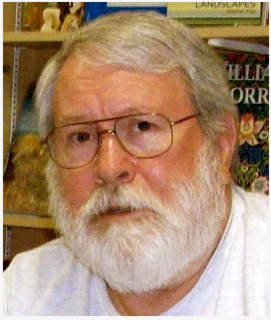 W
WCharles Eugene Fager, known as Chuck Fager, is an American activist, author, editor, publisher and an outspoken and prominent member of the Religious Society of Friends or Quakers. He is known for his work in both the Civil Rights Movement and in the Peace movement. His written works include religious and political essays, humor, adult fiction, and juvenile fiction, and he is best known for his 1974 book Selma 1965: The March That Changed the South, his in-depth history of the 1965 Selma Voting Rights Movement which led to the passage of the Voting Rights Act.
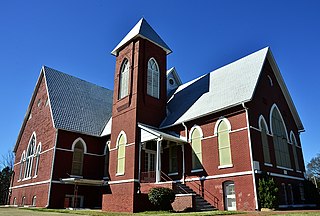 W
WFirst Baptist Church is a historic church at 709 Martin Luther King, Jr. Street in Selma, Alabama. A historically African American Baptist church, it was built in the Gothic Revival style in 1894 and known for its association with the Civil Rights Movement. It was added to the National Register of Historic Places in 1979.
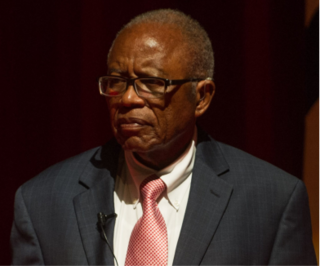 W
WFred David Gray is a civil rights attorney, preacher and activist who practices law in Alabama. He litigated several major civil rights cases in Alabama, including some, such as Browder v. Gayle, that reached the United States Supreme Court for rulings. He served as the President of the National Bar Association in 1985, and in 2001 was elected as the first African-American President of the Alabama State Bar.
 W
WAbraham Joshua Heschel was a Polish-born American rabbi and one of the leading Jewish theologians and Jewish philosophers of the 20th century. Heschel, a professor of Jewish mysticism at the Jewish Theological Seminary of America, authored a number of widely read books on Jewish philosophy and was a leader in the civil rights movement.
 W
WArchbishop Iakovos of North and South America was the primate of the Greek Orthodox Archdiocese of North and South America from 1959 until his resignation in 1996.
 W
WJimmie Lee Jackson was an African American civil rights activist in Marion, Alabama, and a deacon in the Baptist church. On February 18, 1965, while unarmed and participating in a peaceful voting rights march in his city, he was beaten by troopers and fatally shot by an Alabama state trooper. Jackson died eight days later in the hospital.
 W
WFrank Minis Johnson Jr. was a United States District Judge and United States Circuit Judge serving 1955 to 1999 on the United States District Court for the Middle District of Alabama, United States Court of Appeals for the Fifth Circuit and United States Court of Appeals for the Eleventh Circuit. He made landmark civil rights rulings that helped end segregation and disenfranchisement of African Americans in the South. In the words of journalist and historian Bill Moyers, Judge Johnson "altered forever the face of the South."
 W
WCoretta Scott King was an American author, activist, civil rights leader, and the wife of Martin Luther King Jr. As an advocate for African-American equality, she was a leader for the civil rights movement in the 1960s. King was also a singer who often incorporated music into her civil rights work. King met her husband while attending graduate school in Boston. They both became increasingly active in the American civil rights movement.
 W
WMartin Luther King Jr. was an American Baptist minister and activist who became the most visible spokesman and leader in the American civil rights movement from 1955 until his assassination in 1968. King advanced civil rights through nonviolence and civil disobedience, inspired by his Christian beliefs and the nonviolent activism of Mahatma Gandhi. He was the son of early civil rights activist and minister Martin Luther King Sr.
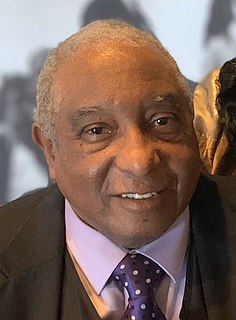 W
WBernard Lafayette, Jr. is an American civil rights activist and organizer, who was a leader in the Civil Rights Movement. He played a leading role in early organizing of the Selma Voting Rights Movement; was a member of the Nashville Student Movement; and worked closely throughout the 1960s movements with groups such as the Student Nonviolent Coordinating Committee (SNCC), the Southern Christian Leadership Conference (SCLC), and the American Friends Service Committee.
 W
WJohn Robert Lewis was an American statesman and civil rights activist who served in the United States House of Representatives for Georgia's 5th congressional district from 1987 until his death in 2020. He was the chairman of the Student Nonviolent Coordinating Committee (SNCC) from 1963 to 1966. Lewis was one of the "Big Six" leaders of groups who organized the 1963 March on Washington. He fulfilled many key roles in the civil rights movement and its actions to end legalized racial segregation in the United States. In 1965, Lewis led the first of three Selma to Montgomery marches across the Edmund Pettus Bridge. In an incident which became known as Bloody Sunday, state troopers and police attacked the marchers, including Lewis.
 W
WViola Fauver Liuzzo was an American civil rights activist. In March 1965, Liuzzo heeded the call of Martin Luther King Jr. and traveled from Detroit, Michigan, to Selma, Alabama, in the wake of the Bloody Sunday attempt at marching across the Edmund Pettus Bridge. Liuzzo participated in the successful Selma to Montgomery marches and helped with coordination and logistics. At the age of 39, while driving back from a trip shuttling fellow activists to the Montgomery airport, she was fatally hit by shots fired from a pursuing car containing Ku Klux Klan (KKK) members Collie Wilkins, William Eaton, Eugene Thomas, and Gary Thomas Rowe, the latter of whom was actually an undercover informant working for the Federal Bureau of Investigation (FBI).
 W
WJames "Spider" Martin was an American photographer known for his work documenting the American Civil Rights Movement in 1965, specifically Bloody Sunday and other incidents from the Selma to Montgomery marches.
 W
WSamuel Berry McKinney was an American Christian pastor and Civil Rights leader. He was the pastor of Mount Zion Baptist Church in Seattle for four decades. He attended the Selma to Montgomery marches in 1965, and he served on the Seattle Human Rights Commission.
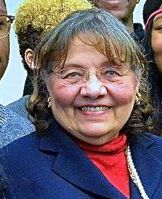 W
WDiane Judith Nash is an American civil rights activist, and a leader and strategist of the student wing of the Civil Rights Movement.
 W
WThe National Voting Rights Museum and Institute, established in 1991 and opened in 1993, is an American museum in Selma, Alabama, which honors, chronicles, collects, archives, and displays the artifacts and testimony of the activists who participated in the events leading up to and including the 1965 Selma to Montgomery marches, and passage of the 1965 Voting Rights Act, as well as those who worked for the African-American Voting Rights and Women's Suffrage movements. As the museum describes in its mission statement, it recognizes other people, events, and actions which furthered America's Right to Vote since "the Founding Fathers first planted the seeds of democracy in 1776." The museum was founded by Faya Ora Rose Touré and Marie Foster.
 W
WJames Joseph Reeb was an American Unitarian Universalist minister, pastor, and activist during the civil rights movement in Washington, D.C. and Boston, Massachusetts. While participating in the Selma to Montgomery marches actions in Selma, Alabama, in 1965, he was murdered by white segregationists, dying of head injuries in the hospital two days after being severely beaten. Three men were tried for Reeb's murder but were acquitted by an all-white jury. His murder remains officially unsolved.
 W
WFrederick Douglas Reese was an American civil rights activist, educator and minister from Selma, Alabama. Known as a member of Selma's "Courageous Eight", Reese was the president of the Dallas County Voters League (DCVL) when it invited the Southern Christian Leadership Conference and Martin Luther King Jr. to Selma to amplify the city's local voting rights campaign. This campaign eventually gave birth to the Selma to Montgomery marches, which later led to the passage of the Voting Rights Act.
 W
WWalter Philip Reuther was an American leader of organized labor and civil rights activist who built the United Automobile Workers (UAW) into one of the most progressive labor unions in American history. He saw labor movements not as narrow special interest groups but as instruments to advance social justice and human rights in democratic societies. He leveraged the UAW's resources and influence to advocate for workers' rights, civil rights, women's rights, universal health care, public education, affordable housing, environmental stewardship and nuclear nonproliferation around the world. He believed in Swedish-style social democracy and societal change through nonviolent civil disobedience. He cofounded the AFL-CIO in 1955 with George Meaney. He survived two attempted assassinations, including one at home where he was struck by a 12-gauge shotgun blast fired through his kitchen window. He was the fourth and longest serving president of the UAW, serving from 1946 until his death in 1970.
 W
WAmelia Isadora Platts Boynton Robinson was an American activist who was a leader of the American Civil Rights Movement in Selma, Alabama, and a key figure in the 1965 Selma to Montgomery marches. In 1984, she became founding vice-president of the Schiller Institute affiliated with Lyndon LaRouche. She was awarded the Martin Luther King Jr. Freedom Medal in 1990.
 W
WAngela Veta Russell is an American politician and civil rights activist who served in the Montana House of Representatives from the 99th district as a member of the Democratic Party. Russell participated in the Selma to Montgomery marches and Native American activism. She is a member of the Crow Tribe of Montana.
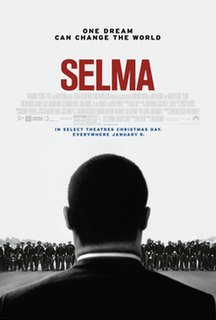 W
WSelma is a 2014 historical drama film directed by Ava DuVernay and written by Paul Webb. It is based on the 1965 Selma to Montgomery voting rights marches initiated and directed by James Bevel and led by Martin Luther King Jr., Hosea Williams, and John Lewis. The film stars actors David Oyelowo as King, Tom Wilkinson as President Lyndon B. Johnson, Tim Roth as George Wallace, Carmen Ejogo as Coretta Scott King, and Common as Bevel.
 W
WThe Selma to Montgomery National Historic Trail is a 54-mile (87 km) National Historic Trail in Alabama. It commemorates and marks the journey of the participants of the 1965 Selma to Montgomery marches in support of the Voting Rights Act.
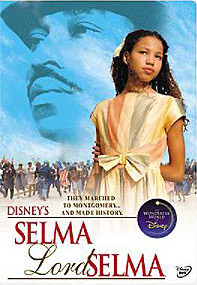 W
WSelma, Lord, Selma is a 1999 American made-for-television biographical drama film based on true events that happened in March 1965, known as Bloody Sunday in Selma, Alabama. The film tells the story through the eyes of an 11-year-old African-American girl named Sheyann Webb. It was directed by Charles Burnett, one of the pioneers of black American independent cinema. It premiered as a television movie on ABC on January 17, 1999.
 W
WThe Southern Christian Leadership Conference (SCLC) is an African-American civil rights organization. SCLC is closely associated with its first president, Martin Luther King Jr., who had a large role in the American civil rights movement.
 W
WThe Student Nonviolent Coordinating Committee was the principal channel of student commitment in the United States to the civil rights movement during the 1960s. Emerging in 1960 from the student-led sit-ins at segregated lunch counters in Greensboro, North Carolina, and Nashville, Tennessee, the Committee sought to coordinate and assist direct-action challenges to the civic segregation and political exclusion of African Americans. From 1962, with the support of the Voter Education Project, SNCC committed to the registration and mobilization of black voters in the Deep South. Affiliates such as the Mississippi Freedom Democratic Party and the Lowndes County Freedom Organization in Alabama increased dramatically the pressure on federal and state government to enforce constitutional protections.
 W
WCordy Tindell Vivian was an American minister, author, and close friend and lieutenant of Martin Luther King Jr. during the civil rights movement. Vivian resided in Atlanta, Georgia, and founded the C. T. Vivian Leadership Institute, Inc. He was a member of the Alpha Phi Alpha fraternity.
 W
WSheyann Webb-Christburg is known as Martin Luther King Jr.'s "Smallest Freedom Fighter" and co-author of the book Selma, Lord, Selma. As a nine-year-old, Webb took part in the first attempt at the Selma to Montgomery march across the Edmund Pettus Bridge on March 7, 1965, known as Bloody Sunday.
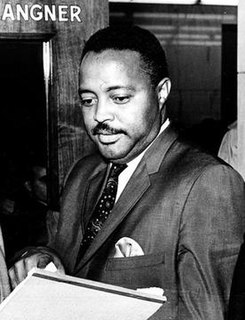 W
WHosea Lorenzo Williams was an American civil rights leader, activist, ordained minister, businessman, philanthropist, scientist, and politician. He may be best known as a trusted member of fellow famed civil rights activist and Nobel Peace Prize winner Martin Luther King Jr.'s inner circle. Under the banner of their flagship organization, the Southern Christian Leadership Conference, King depended on Williams to organize and stir masses of people into nonviolent direct action in myriad protest campaigns they waged against racial, political, economic, and social injustice. King alternately referred to Williams, his chief field lieutenant, as his "bull in a china closet" and his "Castro." Vowing to continue King's work for the poor, Williams is well known in his own right as the founding president of one of the largest social services organizations in North America, Hosea Feed the Hungry and Homeless. His famous motto was "Unbought and Unbossed."